(165).Start Dehydrating Vegetables Business
Over the years, high labor costs in Europe have forced many British, Irish,
Spanish, and Polish producers of dried fruits and vegetables to stop production. This has
created new processing opportunities for developing rural economies with the appropriate
agro-climatic conditions, high production potential, and low operating costs. Egypt, China, India, and smaller countries are trying to fill the gap, yet are unable to completely satisfy the demand for quality dried products. Each year, demand of some 8,500 tons of dried fruits and vegetables remains unfilled mostly because these producers are too large to effectively re-tool their machinery for comparatively small, ‘odd cut’ orders, that is, diced and sized vegetables (such as, turnips, spinach, cabbage, courgette, and sun dried tomatoes as pictured) to nonstandard dimensions
The principle of preservat ion by dehydration process is to remove the
moisture content of a material to a level where micro-organism may not be able to grow and spoil it. Dehydration of vegetables by sun-drying is the oldest k n o w n m e t h o d . N o w m o d e r n techniques have been developed for d e h y d r a t i o n o f v e g e t a b l e s . I n t h i s
process, the dehydrated product has better flavour, colour, aroma, rehydration,
acceptability, etc. in comparison to sun dried dehydrated products.T h e r e a r e s o m e d e h y d r a t e d vegetables as cabbage, carrot, green
chilli, bitter gourd, cucumber, etc. The dehydrated vegetables are used to
manufacture instant vegetable noodles, soups, snacks and fast food. Dehydrated o n i o n i s u s e d a s c o n d i m e n t a n d
flavouring agent in manufacturing of tomato ketchups, sauces, salad, pickles,
chutneys, meat sausages, masala bread a n d b u n s , b r e a k f a s t f o o d s , e t c . Dehydrated garlic is used for aids in digestion and for absorption of food h a v i n g a t h e l e m e t i c a n d a n t i s e p t i c p r o p e r t i e s
a n d i n s ome me d i c i n a lformulations. The latest technique for
dehydration of vegetables known as o s m o t i c d e h y d r a t i o n , h a s b e e n developed by Bhabha Atomic Research Centre, Mumbai.
Dehydrated cabbage, carrot, okra,e t c . a r e wi d e l y c o n s ume d b y f o o d processing industry in the manufacture of instant vegetable noodles, soups, mixes, snacks and salads. Dehydrated potato products are good snack items. Dehydrated ginger, garlic, etc. have the m e d i c i n a l v a l u e s a n d a r e l a r g e l y consumed in Ayurvedic medicines. The market is limited to Indian houses d u e t o s o c i a l e n v i r o n m e n t a n d availability of fresh vegetable throughout the year but it has good potential in food p r o c e s s i n g i n d u s t r i e s , d e f e n c e ,pharmaceutical industries, hotels and
restaurants, caterers, etc.Besides, it has good export potential especially as one of the processed products.
TECHNICAL ASPECTS
Process of Manufacture
The fresh vegetables are washed thoroughly and prepared into suitable size. These prepared vegetable pieces a r e t h e n b l a n c h e d o r t r e a t e d wi t h permitted chemicals/preservatives. The treated vegetables are then dehydrated in two stages. In first stage, the moisture content is reduced upto 20+5% and in the second stage moisture content is reduced to 8+2% depending upon type of vegetables. The temperature of drier in first stage drying is normally kept at
60+5O C. and in second stage, the temperature is maintained at 40+5OC.The dehydrated vegetables are then cooled and packed in suitable polythene bags and stored at cool and dry place.
Qu a l i t y C o n t r o l a n d S t a n d a r d s Fruit Products Order and Prevention
of Food Adulteration Act, are mandatory.Dehydrated vegetables should conform to the specifications laid down in Fruit Products Order
Dehydrating vegetables (whether fresh from the garden, the farmer's market, or even just from the grocery store at in-season prices) for use in the off-season is one of the healthiest ways of preserving vegetables. Dehydrating vegetables preserves them with a nutritional content that far surpasses that of canned vegetables. Additionally, the process of dehydrating vegetables is often more cost-effective than freezing, as you don't use electricity in the long-term storage of your items.
The process of dehydrating vegetables can be broken into a couple of simple steps:
- preparation, including pre-treating the vegetables (if necessary)
- drying or dehydrating the vegetables
- storing the finished dehydrated vegetables
Below, you'll find a list of common vegetable types that dry well, along with easy to follow instructions. (You may also want to investigate dehydrating herbs and fruits!
Dehydrating Vegetables: ARTICHOKES
Instructions for drying artichokes:
1. Wash the vegetables
2. Remove the outer leaves.
3. Cut the artichoke hearts into quarters.
4. Steam blanch the vegetables for 4 minutes, then drain well.
5. Dehydrate artichokes at 100 degrees (F) for 18 hours, or until brittle.
6. Store dried artichokes in a clean, dry, airtight container, in a cool dark location. (Light can cause discoloration)
Use your dried artichoke hearts marinated (for salads, antipasto platters, topping on pizzas, casseroled) or in dips.
To rehydrate: soak in boiling water for about 15 minutes, adding a little lemon juice to help keep the color.
Dehydrating Vegetables: ASPARAGUS
Instructions for drying asparagus:
1. Wash the vegetables
2. Remove any tough ends.
3. Steam blanch for 3 minutes. Drain.
4. Dehydrate asparagus at 100 degrees (F) for 35 hours or until dry and brittle (to avoid them molding in storage).
5. Store dried asparagus in a clean, dry, airtight container, in a cool dark location. (Light can cause discoloration)
Dried asparagus is best used in soups, casseroles, or dishes that require mashed asparagus.
To rehydrate, soak in hot water for 30 minutes and drain. Stalks will likely remain a little tough
Dehydrating Vegetables: GREEN BEANS
Instructions for drying green beans:
1. Wash the vegetables
2. Snip off ends and cut into 1” pieces.
3. Steam blanch for 4 minutes, then soak in iced water for 4 minutes.
4. Drain the vegetables.
5. Place green beans on a cookie sheet in a single layer and freeze for 45 minutes.
6. Dehydrate green beans at 100 degrees (F) for about 30 hours or until crisp.
7. Store dried green beans in a clean, dry, airtight container, in a cool dark location. (Light can cause discoloration)
Dried green beans are best served in hot main dishes like stews, soups, casseroles. You can add dried green beans directly to soups and stews… just add a little extra liquid to the recipe.
To rehydrate, soak in cold water for 2 hours, or in hot water for 1 hour.
Dehydrating Vegetables: BEETS
Instructions for drying beets:
1. Wash the vegetables.
2. Remove tops.
3. Cut beets in half.
4. Steam the vegetables until tender (about 20 minutes).
5. Peel and cut into ½” slices (or shred).
6. Dehydrate sliced beets at 100 degrees (F) for about 12 hours or until brittle. Dehydrate shredded beets for approx. 10 hours.
7. Store dried beets in a clean, dry, airtight container, in a cool dark location. (Light can cause discoloration)
Dried beets can be ground in your food processor and use for color or flavoring.
To rehydrate, soak in cold water for 1 hour and rain, or soak overnight in the fridge and drain.
Dehydrating Vegetables: BROCCOLI
Instructions for dehydrating broccoli:
1. Wash the vegetables
2. Peel the tough skin from the stalks.
3. Separate the florets from the stalks.
4. Cut the stalks into ½” diagonal slices and cut the florets into uniform pieces.
5. dehydrate broccoli at 100 degrees for about 18 hours or until brittle.
6. Store dried broccoli in a clean, dry, airtight container, in a cool dark location. (Light can cause discoloration)
Rehydrated broccoli is best used in soups and casseroles.
To rehydrate, soak in hot water for 30 minutes or steam for 15 minutes (until tender). For fresher looking broccoli, soak in cold water for 5 minutes before cooking.
Dehydrating Vegetables: BRUSSELS SPROUTS
Instructions for dehydrating brussels sprouts:
1. Wash the vegetables
2. Remove tough outer leaves.
3. Cut sprouts in half.
4. Steam blanch the vegetables for 3 minutes and drain.
5. Dehydrate brussels sprouts at 100 degrees for 12 hours or until brittle.
6. Store dried brussels sprouts in a clean, dry, airtight container, in a cool dark location. (Light can cause discoloration)
To rehydrate, soak in hot water with a little lemon juice for about 30 minutes. Drain before using
Dehydrating Vegetables: CABBAGE (RED OR GREEN)
1. Wash the cabbage heads and trim away the outer leaves.
2. Remove the core
3. Shred/grate the cabbage head.
4. Steam blanch vegetables for 2 minutes.
5. Dehydrate cabbage at 100 degrees (F) for 18 hours or until crisp.
6. Store dried cabbage in a clean, dry, airtight container, in a cool dark location. (Light can cause discoloration)
Dried cabbage can be added directly to soups or stews without rehydrating. Note: Red cabbage loses some of its color when rehydrated.
To rehydrate, soak in cold water with a little lemon juice for 30 minutes and drain.
Dehydrating Vegetables: CARROTS
Instructions for dehydrating carrots:
1. Wash the carrots and trim off the tops.
2. Cut into ¼” slices (or shred).
3. Dehydrate carrots at 100 degrees for about 16 hours (for slices) or 12 hours for shredded carrots (until brittle).
4. Store dried carrots in a clean, dry, airtight container, in a cool dark location. (Light can cause discoloration)
Dried carrots can be added directly to stews and soups without rehydrating.
To rehydrate, soak in cold water for 30 minutes and drain.
Dehydrating Vegetables: CELERY
Instructions for dehydrating celery:
1. Trim away leaves and ends
2. Wash celery stalks and cut into ½” pieces.
3. Soak vegetables for 5 minutes in 6 cups of cold water/1 tbsp baking soda (helps preserve the color).
4. Blanch for 2 minutes and drain.
5. Dehydrate celery at 100 degrees (F) for about 18 hours or until crisp.
6. Store dried celery in a clean, dry, airtight container, in a cool dark location. (Light can cause discoloration)
No need to rehydrate for use in soups or stews. Make celery flakes by processing dried celery in a blender or food processor. For celery salt, mix ground dried celery with equal parts of salt.
To rehydrate, soak in hot water for 1 hour, drain.
Dehydrating Vegetables: CHARD
Instructions for dehydrating Chard:
1. Wash chard well
2. Remove stems.
3. Dehydrate chard at 100 degrees (F) for 10 hours or until brittle.
4. Store dried chard in a clean, dry, airtight container, in a cool dark location. (Light can cause discoloration)
To rehydrate, soak in hot water with a little lemon juice for 15 minutes, drain well.
Dehydrating Vegetables: CORN
Instructions for dehydrating corn:
1. Shuck ears and remove silk.
2. Steam blanch ears for 4 minutes, then drain.
3. Cut kernels from ears.
4. Dry kernels at 100 degrees (F) for 18 hours or until crisp.
5. Store dried corn in a clean, dry, airtight container, in a cool dark location. (Light can cause discoloration)
Dried corn works well in casseroles, creamed corn, stews, chowders, soups. You can even make your own cornmeal, by using a foodmill or grinder to grind the dried kernels.
To rehydrate, soak in hot water for about 30 minutes and drain.
Dehydrating Vegetables: EGGPLANT
1. Wash eggplant
2. Cut the vegetable into ½” slices.
3. Dehydrate eggplant at 100 degrees (F) for about 20 hours or until leathery.
4. Store dried eggplant in a clean, dry, airtight container, in a cool dark location. (Light can cause discoloration)
Dried eggplant works well in casseroles.
To rehydrate, soak in hot water for about 30 minutes and drain.
Dehydrating Vegetables: GARLIC CLOVES
1. Use firm cloves without bruises.
2. Peel cloves and cut in half.
3. Remove the sprout in the middle.
4. Dehydrate garlic cloves at 100 degrees (F) for about 6 hours or until crisp.
5. Store dried garlic in a clean, dry, airtight container, in a cool dark location. (Light can cause discoloration)
To make garlic powder, grind the dried garlic in a blender or seed grinder. For garlic salt, mix ground dried garlic with 4 parts salt.
To rehydrate, soak in cold water for about 3 hours in the fridge and drain.
Dehydrating Vegetables: LEEKS
1. Remove the tough top and outer leaves.
2. Wash the vegetables in cold water.
3. Cut the stalks in half, lengthwise.
4. Slice crossways into ¼” slices
5. Dehydrate leeks at 100 degrees (F) for 18 hours or until crisp.
6. Store dried leeks in a clean, dry, airtight container, in a cool dark location. (Light can cause discoloration)
No need to rehydrate if using in soups or stews.
To rehydrate, soak in hot water for 30 minutes and drain.
Dehydrating Vegetables: MUSHROOMS
1. Rinse mushrooms quickly
2. Trim mushrooms and cut into ¼” slices.
3. Dehydrate mushrooms at 100 degrees (F) for 18 hours or until crisp.
4. Store dried mushrooms in a clean, dry, airtight container, in a cool dark location. (Light can cause discoloration)
No need to rehydrate if using in soups or stews.
To rehydrate, soak in cold water for 30 minutes and drain.
Dehydrating Vegetables: OKRA
1. Select vegetables with tender, firm pods.
2. Trim the ends and wash.
3. Cut okra into 1/4" slices.
4. Dehydrate okra at 100 degrees (F). (until leathery)
5. Store dried okra in a clean, dry, airtight container, in a cool dark location. (Light can cause discoloration)
Dried okra is good for using as a thickener in soups or gumbos.
Dehydrating Vegetables: ONION
Instructions for dehydrating onion:
1. Remove outer layer/skin.
2. Dice onion or else cut into ¼” slices.
3. Dehydrate onion at 100 degrees (F) for 20 hours or until brittle.
4. Store dried onion in a clean, dry, airtight container, in a cool dark location. (Light can cause discoloration)
No need to rehydrate if using in soups or stews. Make onion flakes and onion powder by grinding in a food mill or blender. For onion salt, mix onion
To rehydrate, soak in hot water for 15 minutes and drain.
Dehydrating Vegetables: PARSNIPS
1. Wash and peel (optional) parsnips
2. Slice vegetables into ¼” slices (or shred).
3. Steam blanch for 4 minutes and drain.
4. Dehydrate parsnips at 100 degrees (F) for about 16 hours or until brittle. Dehydrate shredded parsnips for 10/12 hours.
5. Store dried parsnips in a clean, dry, airtight container, in a cool dark location. (Light can cause discoloration)
Try eating rehydrated parsnips mashed like you would mashed potatoes!
To rehydrate, soak in hot water for 1 hour, drain.
Dehydrating Vegetables: PEAS
1. Remove peas from the pods.
2. Steam blanch vegetables for 3 minutes and drain.
3. Dehydrate peas at 100 degrees (F) for 12 hours or until brittle.
4. Store dried peas in a clean, dry, airtight container, in a cool dark location. (Light can cause discoloration)
No need to rehydrate if using in soups.
To rehydrate dried peas, soak in hot water for 30 minutes and drain.
Dehydrating Vegetables: PEPPERS
1. Wash peppers and remove core.
2. Dice or cut vegetables into 1/4" slices.
3. Dehydrate pepper at 100 degrees (F) for 24 hours or until brittle.
4. Store dried peppers in a clean, dry, airtight container, in a cool dark location. (Light can cause discoloration)
No need to rehydrate if using in soups. For a little crunch in your salad, try adding dried bell pepper pieces.
To rehydrate dried peppers, soak in hot water for 20 minutes and drain.
Dehydrating Vegetables: POTATOES
1. Scrub, peel (optional) and rinse potatoes.
2. Dice, grate or cut into ¼” slices.
3. Soak vegetables in ascorbic acid or lemon juice solution for 5 minutes and drain. (to prevent discoloration. If you don't pretreat potatoes, they will turn black)
4. Dehydrate potatoes at 100 degrees for 8 hours or until crisp.
5. Store dried potatoes in a clean, dry, airtight container, in a cool dark location. (Light can cause discoloration)
To rehydrate, soak in cold water for 30 minutes, drain and pat dry.
Dehydrating Vegetables: SPINACH
1. Wash spinach well
2. Remove stems.
3. Dehydrate spinach at 100 degrees (F) for 10 hours or until brittle.
4. Store dried spinach in a clean, dry, airtight container, in a cool dark location. (Light can cause discoloration)
To rehydrate, soak in hot water with a little lemon juice for 15 minutes, drain well.
Dehydrating Vegetables: TOMATILLOS
1. Remove papery husk and wash tomatillos. Remove stems.
2. Cut in half.
3. Dehydrate tomatillos at 100 degrees (F) until leathery (can take a couple of days, depending upon size).
4. Store dried tomatillos in a clean, dry, airtight container, in a cool dark location. (Light can cause discoloration)
These make a delicious, sweet snack, if dehydrated once the fruit has ripened. Use rehydrated in salsas.
To rehydrate, soak for 15 to 30 minutes in hot water and drain.
Dehydrating Vegetables: TOMATOES
1. Wash tomatoes and remove stems.
2. Cut into ½” slices. If smaller tomatoes (like cherry or small plum tomatoes), then you can cut them in half.)
3. Remove seeds (optional).
4. Dehydrate tomatoes at 100 degrees (F) until crisp (slices – take 24 hours (avg) and halved plums take about 3 days).
5. Store dried tomatoes in a clean, dry, airtight container, in a cool dark location. (Light can cause discoloration)
Use in stews, sauces or marinades.
To rehydrate, soak for 15 to 30 minutes in cold water.
Dehydrating Vegetables: ZUCCHINI
1. Wash zucchini
2. Trim and cut into ¼ “ slices (or grate).
3. Dry zucchini at 100 degrees (F) for 12 hours or until brittle.
4. Store dried zucchini in a clean, dry, airtight container, in a cool dark location. (Light can cause discoloration)
Grated zucchini works well in bakery like zucchini bread. Slices work well in casseroles, or use seasoned dried chips as snacks.
To rehydrate, soak in hot water for 30 minutes and rain
Addresses of Machinery and Equipment Suppliers
1. M/s. Mather and Platt (India) Ltd.
805-806, Ansal Bhawan,16, Kasturba Gandhi Marg,
New Delhi - 110 001.
2. M/s. Raylons Metal Works
Kondivita Lane,Post Box - 17426,P.O. M.J.B. Nagar,
Andheri (E),Mumbai - 400 059
3. M/s. International Food Machinery Corporation
Krishna Opp. Deep Bhavan,Pandit Nehru Marg,
Jamnagar - 361 008(Gujarat)
4. M/s.The Master Mechanical Works Pvt. Ltd.
75, Link Road, Ist Floor,Adjacent to Moolchand Hospital,
Lajpat Nagar - III,
New Delhi - 110 024.
5. M/s. Narangs Corporation
P-25, Cannaught Place, (Below Madras Hotel),
New Delhi - 110 001.
6. M/s. B. Sen Barry and Co.
65/11, Rohtak Road,Karol Bagh,New Delhi - 110 005.
Addresses of Raw Material Suppliers
1. M/s. Devendra Cottage Industries
Sector 22-C,Chandigarh.
2. M/s. T. Ali Mohammed and Co.
144-45, Sarang Street,Near M.J. Phule Market,
Mumbai - 400 003.
3. M/s. S.B. Mehta and Associates
2-B, Ganga Vihar, 94, Kanji Sayed Street,
Mumbai - 400 003.
4. M/s. Chemical Market
Tilak Bazar, Khari Baoli,
Delhi - 110 006.



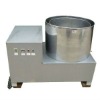


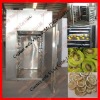
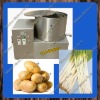


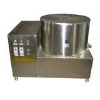
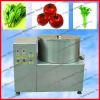












Dear Sir,
ReplyDeleteI would like to now more about this industries my email id is info@candbinfo.com mobile is. 9327052723
please give your contact detail, can i start as small scale unit
Dear Sir,
ReplyDeleteI am looking for a supplier of machines in vegetable dehydration plant with installation and completion. The address which is in this article are without phone number & email id. Could you please provide me that to contact for further action
Thx & Regards
Fayroz
ksfdeen@gmail.com
9488017008.
Great article
ReplyDeleteMorton
We are interested in doing business
ReplyDeleteDear Sir,
ReplyDeleteI would like to now more about this industries my email id is ms.nikam.pramod@gmail.com mobile is. 9881234240
please give your contact detail, can i start as small scale unit
You are writing some Amazing tips. This article really helped me a lot. Thanks for sharing this blog.
ReplyDeleteTop 10 Best Selling Vegetable Purifier/Cleaners Available in India
Plz give me its requirements,its prospects and the kind of customer interested...
ReplyDeleteNice post ever. You guys can use Dry Vegetable powder it is healthy as we prepare it naturally.
ReplyDeleteDry Vegetable Powder Manufacturers
Dear sir
ReplyDeleteI would like to start a dehydrated vegetable business. Can you give a details about this.
Thank you
Sampath
Hi Sampath,
DeleteIf you are interested in this technology. Please provide me your contact details so that I can share the details of technology.
Pls send it on pankajceipl @ yahoo.com or pankajceipl @ gmail.com.
DeleteThanks for sharing about dehydrating vegetables have a look at
ReplyDeleteMarachekku Oil In Chennai
Cold Pressed Oil In Chennai
Chekku Ennai In Chennai
Gingelly Oil Price In Chennai
Thanks, very impressive article. I appreciate you to continue your work.
ReplyDeleteDiscover more here
Next page
Very informative article , kindly mail more details along with project appx cost to Vilas.matondkar@gamil.com
ReplyDeleteCan u pls share some 1contact for further information
ReplyDeleteRegards
Pratish
+91 9768111112
Is there anyone who would like to do business of Green Tea products. Please watsapp me at +91-8505836564
ReplyDeleteTry to write more articles on vegetable seed packing
ReplyDeleteservices.
I want more information about onion dehydration plant
ReplyDeletesaurabhdiwate1@gmail.com
DeleteI want some more knowledge on fruits and vegetable dehydration. Please connect via chhedapriteka@gmail.com
ReplyDelete
ReplyDeleteI would like to start a dehydrated vegetable business Can you give a more details about this contact- siddhantdokhe@gmail.com
Growing your own vegetables is a smart idea for many reasons... After World War 11, new conventional farming techniques spearheaded by large companies were to drastically change the way farmers grow their crop. At that time, growing your own vegetables meant you would use organically enriched soil, rotate your vegetables so that the soil would not become depleted of specific nutrients, and store some for the winter. carote
ReplyDeleteThis comment has been removed by the author.
ReplyDeleteAre you running around or sitting and wondering what garden gifts you can give to the gardeners on your list. There are many gifts that can be made at home or inexpensive ones to purchase. Gilbert tree service
ReplyDeleteThanks for Very useful information regarding dehydration, i am interested in vegetables dehydration business, please give me more information about dehydration.
ReplyDeleteRegards,
Anjali Mankar
anjalimankar2008@yahoo.com
I want to start dehydrated Vegetables start up soon...So wanted some Information regarding Marketing about that product
ReplyDeleteare u looking for best digital marketing course in chandigarh. have a look in to this article. seo training course in chandigarh
ReplyDeleteI wanted to thank you for this excellent read!! I definitely loved every little bit of it. I have you bookmarked your site to check out the new stuff you post. https://bestsilicagelsingapore.tumblr.com/
ReplyDeleteIf you want to check out digital marketing training institute Chandigarh then check this link digital marketing course Chandigarh
ReplyDeleteAre you running around or sitting and wondering what garden gifts you can give to the gardeners on your list. There are many gifts that can be made at home or inexpensive ones to purchase. Kelowna Tree Service
ReplyDeleteGardening is making a comeback. It has been a source of food for ages. One of the main advantages of having your own vegetable garden is being able to eat fresh vegetables right out of your own garden without going to the shop where much of the vegetables are shipped from hundreds of miles away. Stump Removal Kelowna
ReplyDeleteThanks for giving so much of Information. Sethji Dry Fruits, we strive to provide you with the best Dry Fruits Like Famous Black Paper Cashew, Plain Cashew, Almond And Pistachios. Packed In A Luxurious Customizable Box, Perfectly Arranged For Excellent Gifting. seeds with high protein
ReplyDelete